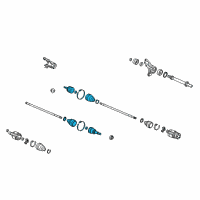CV Joint
Select vehicle to guarantee fit
- Department
- Brands
- Prices
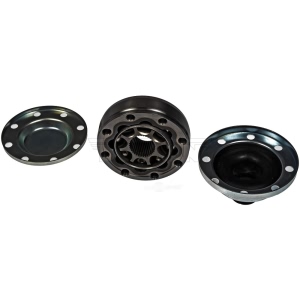
 $191.15Product Specifications
$191.15Product Specifications- Additional Contents: 1 Drive Shaft CV Joint; 1 Tube of Grease; 1 Boot Clamp; 1 Retainer Ring; 2 Gaskets; 4 Ganged Washers; 8 Bolts
- Axle Nut Included: No
- Bolt Circle Diameter: 3.387"
- Bolt Diameter: 0.347"
- Bolt Hole Quantity: 8
- Bolt Thread Sizes: M8 X 1.25
- Boot Clamps Included: Yes
- Boot Included: Yes
- Boot Rib Quantity: 0
- Color/Finish: Silver
- Grease Included: Yes
- Housing Outside Diameter (in): 3.912"
- Housing Thickness (in): 1.15"
- Installation Hardware Included: Yes
- Item Grade: Standard Replacement
- Material: Steel
- Mount Type: Bolt On
- Spline Count: 35
- Spline Diameter (In): 1.06"
- Spline Length (In): 1.14"
- UPC: 019495722472
- Part Description: OE Solutions Front Propeller Shaft Cv Joint Kit
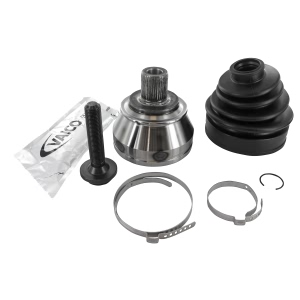

VAICO® Front Outer Driveshaft CV Joint
PartNumber: V10-2173$159.76Product Specifications- Drive Shaft: without ABS ring
- Internal Teeth, wheel side: 27
- Joint Type: CV Joint
- Length [mm]: 97
- Outer diameter [mm]: 100
- Outer gearing wheel side: 38
- Packaging height [cm]: 20
- Packaging width [cm]: 11,5
- Seal Diameter [mm]: 59,5
- Weight [kg]: 2,65
- Part Description: Front Outer Driveshaft CV Joint
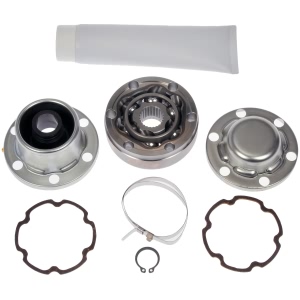
 $186.10Product Specifications
$186.10Product Specifications- Additional Contents: Boot Clamp, Snap Ring
- Bolt Circle Diameter: 2.599"
- Bolt Diameter: 0.334"
- Bolt Hole Quantity: 6
- Color/Finish: Natural
- Grease Included: Yes
- Housing Outside Diameter (in): 3.067"
- Housing Thickness (in): 0.926"
- Installation Hardware Included: No
- Item Grade: Standard Replacement
- Material: Steel
- Spline Count: 24
- Spline Diameter (In): 0.726"
- Spline Length (In): 0.807"
- UPC: 019495535676
- Part Description: OE Solutions Front Propeller Shaft Cv Joint Kit
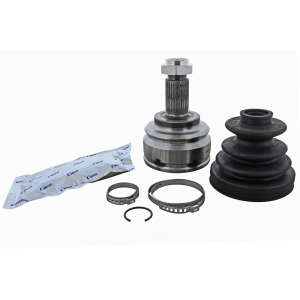

VAICO® CV Joint Kit
PartNumber: V20-1015$116.09Product Specifications- Length [mm]: 115
- Packaging height [cm]: 20
- Packaging width [cm]: 11,5
- Weight [kg]: 3,066
- Part Description: CV Joint Kit
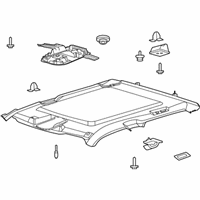
 $172.96Product Specifications
$172.96Product Specifications- Additional Contents: Boot Clamp, Internal Snap Ring
- Bolt Diameter: 0.41"
- Bolt Hole Quantity: 4
- Color/Finish: Natural
- Grease Included: Yes
- Installation Hardware Included: No
- Item Grade: Standard Replacement
- Material: Steel
- Spline Count: 0
- Spline Length (In): 3.5"
- UPC: 019495343141
- Part Description: OE Solutions Front Propeller Shaft Cv Joint Kit
- $254.03 MSRP:
$358.82You Save: $104.79 (30%)Product Specifications- Other Names: Outer Joint
- Item Dimensions: 7.7 x 6.2 x 4.9 inches
- Item Weight: 2.20 Pounds
- Fitment Type: Direct Replacement
- Part Description: Joint Set, Outboard (Gkn)
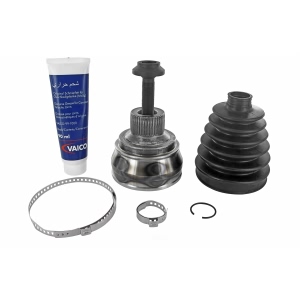
 $91.06Product Specifications
$91.06Product Specifications- Dust Cover: with dust cover
- Length [mm]: 122
- Lubrication: with grease lubrication
- Packaging height [cm]: 12
- Packaging width [cm]: 10,7
- Supplementary Article/Info 2: with bellow
- Weight [kg]: 2,9751
- Part Description: Front Passenger Side Outer Driveshaft CV Joint

 $193.72Product Specifications
$193.72Product Specifications- Additional Contents: Gasket Maker, Boot Clamp, Snap Ring
- Bolt Circle Diameter: 3.383"
- Bolt Diameter: 0.346"
- Bolt Hole Quantity: 6
- Bolt Thread Sizes: M8 X 1.25
- Color/Finish: Natural
- Grease Included: Yes
- Housing Outside Diameter (in): 3.931"
- Housing Thickness (in): 1.653"
- Installation Hardware Included: Yes
- Item Grade: Standard Replacement
- Material: Steel
- Spline Count: 26
- Spline Diameter (In): 1.06"
- Spline Length (In): 1.528"
- UPC: 019495272403
- Part Description: OE Solutions Propeller Shaft Cv Joint Kit
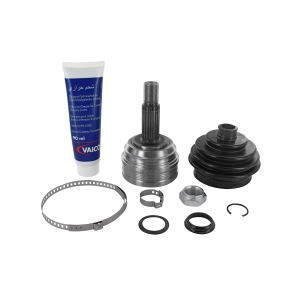
 $103.04Product Specifications
$103.04Product Specifications- Length [mm]: 200
- Lubrication: with grease lubrication
- Packaging Depth [cm]: 10
- Packaging height [cm]: 20
- Packaging width [cm]: 10
- Supplementary Article/Info 2: with bellow
- Supplementary Article/Supplementary Info: with add-on material
- Weight [kg]: 3,188
- Part Description: Front Driver Side Outer Driveshaft CV Joint
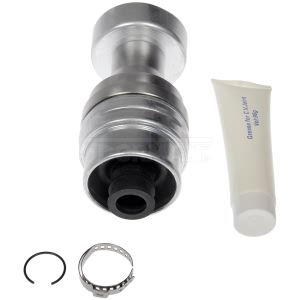
 $187.31Product Specifications
$187.31Product Specifications- Additional Contents: 2 Snap Rings, Boot Clamp
- Bolt Hole Quantity: 0
- Color/Finish: Natural
- Grease Included: Yes
- Installation Hardware Included: No
- Item Grade: Standard Replacement
- Material: Steel
- Spline Count: 0
- Spline Length (In): 7"
- UPC: 019495272373
- Part Description: OE Solutions Front Propeller Shaft Cv Joint Kit
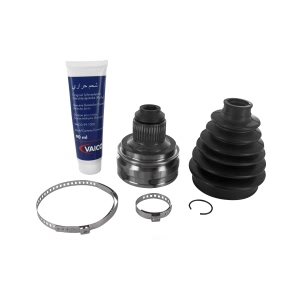

VAICO® Front Outer CV Joint Kit
PartNumber: V10-8551$103.13Product Specifications- Length [mm]: 200
- Packaging height [cm]: 12
- Packaging width [cm]: 10,7
- Weight [kg]: 2,2281
- Part Description: Front Outer CV Joint Kit
OEM (Genuine) Kit Journal
PartNumber: 37126-3S526$61.21 MSRP:$83.63You Save: $22.42 (27%)Product Specifications- Other Names: Universal Joints
- Item Dimensions: 4.8 x 4.2 x 2.8 inches
- Item Weight: 1.90 Pounds
- Fitment Type: Direct Replacement
- Replaces: 37126-3S525
- Part Description: Kit Journal

 $168.52Product Specifications
$168.52Product Specifications- Additional Contents: Boot Clamp, Snap Ring
- Bolt Circle Diameter: 4.035"
- Bolt Diameter: 0.418"
- Bolt Hole Quantity: 6
- Bolt Thread Sizes: M10 X 1.5
- Color/Finish: Natural
- Grease Included: Yes
- Housing Outside Diameter (in): 4.664"
- Housing Thickness (in): 1.297"
- Installation Hardware Included: Yes
- Item Grade: Standard Replacement
- Material: Steel
- Spline Count: 30
- Spline Diameter (In): 1.139"
- Spline Length (In): 1.389"
- UPC: 019495343196
- Part Description: OE Solutions Propeller Shaft Cv Joint Kit With Plunged End
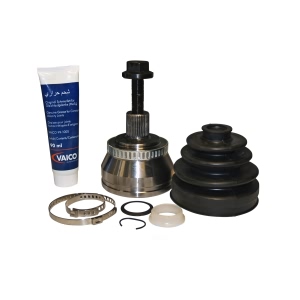
 $79.66Product Specifications
$79.66Product Specifications- for OE number: 4D0 498 099
- Joint Type: CV Joint
- Length [mm]: 115
- Lubrication: with grease lubrication
- Packaging height [cm]: 20
- Packaging width [cm]: 11,5
- Supplementary Article/Info 2: with bellow
- Supplementary Article/Supplementary Info: with add-on material
- Thread Size: M16x1,5
- Weight [kg]: 2,74
- Part Description: Front Driver Side Outer CV Joint Kit
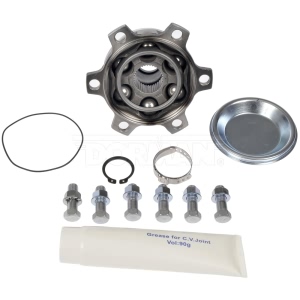
 $178.63Product Specifications
$178.63Product Specifications- Additional Contents: None
- Axle Nut Included: No
- Bolt Circle Diameter: 4.2 mm
- Bolt Diameter: M10
- Bolt Hole Quantity: 6
- Bolt Thread Sizes: M10x1.25
- Boot Clamps Included: Yes
- Boot Included: Yes
- Boot Rib Quantity: 1
- Color/Finish: Black
- Grease Included: Yes
- Housing Outside Diameter (in): 3.7"
- Housing Thickness (in): 0.3"
- Installation Hardware Included: Yes
- Item Grade: Standard Replacement
- Material: Rubber and Steel
- Mount Type: Flange
- Spline Count: 35
- Spline Depth (in): 1"
- Spline Diameter (In): 1"
- Spline Length (In): 1"
- UPC: 885484883000
- Part Description: OE Solutions Rear Propeller Shaft Cv Joint Kit
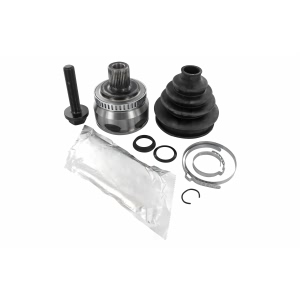
 $84.02Product Specifications
$84.02Product Specifications- Length [mm]: 170
- Packaging Depth [cm]: 12
- Packaging height [cm]: 20
- Packaging width [cm]: 12
- Weight [kg]: 2,536
- Part Description: Front Passenger Side Outer CV Joint Kit
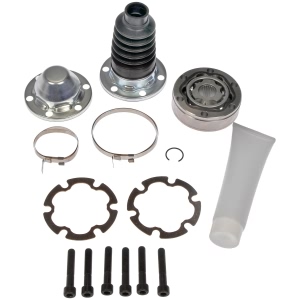
 $158.49Product Specifications
$158.49Product Specifications- Additional Contents: Gasket Maker, Boot Clamp
- Bolt Circle Diameter: 2.821"
- Bolt Diameter: 0.344"
- Bolt Hole Quantity: 6
- Bolt Thread Sizes: M8 X 1.25
- Color/Finish: Natural
- Grease Included: Yes
- Housing Outside Diameter (in): 3.317"
- Housing Thickness (in): 1.024"
- Installation Hardware Included: Yes
- Item Grade: Standard Replacement
- Material: Steel
- Spline Count: 25
- Spline Diameter (In): 0.755"
- Spline Length (In): 1.14"
- UPC: 019495343165
- Part Description: OE Solutions Propeller Shaft Cv Joint Kit
- $35.34 MSRP:
$88.98You Save: $53.64 (61%)Product Specifications- Other Names: Universal Joints
- Item Dimensions: 5.8 x 5.3 x 2.8 inches
- Item Weight: 1.70 Pounds
- Fitment Type: Direct Replacement
- Replaces: 26042371, 12471502, 12479126
- Part Description: Joint Kit-Front Axle Propeller Shaft Front Universal


VAICO® Front Outer CV Joint Kit
PartNumber: V10-7411$71.59Product Specifications- Bellows Material: Thermoplast
- Internal Teeth, wheel side: 27
- Joint Type: CV Joint
- Length [mm]: 106
- Lubrication: with grease lubrication
- Outer gearing wheel side: 36
- Packaging height [cm]: 20
- Packaging width [cm]: 11,5
- Seal Diameter [mm]: 59,5
- Supplementary Article/Info 2: with bellow
- Supplementary Article/Supplementary Info: with add-on material
- Thread Size: M16x1,5
- Weight [kg]: 2,483
- Part Description: Front Outer CV Joint Kit
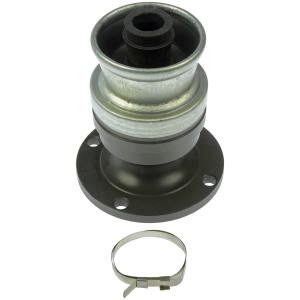
 $180.05Product Specifications
$180.05Product Specifications- Additional Contents: Boot Clamp, Internal Snap Ring
- Bolt Diameter: 0.412"
- Bolt Hole Quantity: 4
- Color/Finish: Natural
- Grease Included: Yes
- Installation Hardware Included: No
- Item Grade: Standard Replacement
- Material: Steel
- Spline Count: 0
- Spline Length (In): 5.47"
- UPC: 019495343134
- Part Description: OE Solutions Propeller Shaft Cv Joint Kit
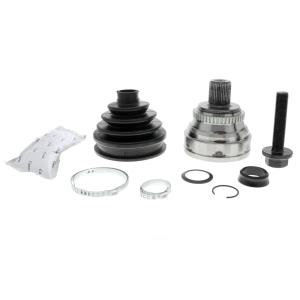
 $62.36Product Specifications
$62.36Product Specifications- Internal Teeth, wheel side: 27
- Length [mm]: 103
- Number of Teeth, ABS ring: 45
- Outer gearing wheel side: 38
- Packaging height [cm]: 20
- Packaging width [cm]: 11,5
- Seal Diameter [mm]: 59,5
- Weight [kg]: 2,58
- Part Description: Front Driver Side Outer CV Joint Kit
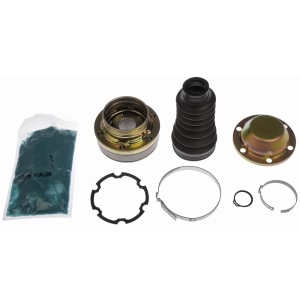
 $158.39Product Specifications
$158.39Product Specifications- Additional Contents: Boot Clamp, Snap Ring
- Bolt Circle Diameter: 3.385"
- Bolt Diameter: 0.332"
- Bolt Hole Quantity: 6
- Bolt Thread Sizes: M8 X 1.25
- Color/Finish: Natural
- Grease Included: Yes
- Housing Outside Diameter (in): 3.855"
- Housing Thickness (in): 1.26"
- Installation Hardware Included: Yes
- Item Grade: Standard Replacement
- Material: Steel
- Spline Count: 25
- Spline Diameter (In): 1.03"
- Spline Length (In): 1.32"
- UPC: 019495272441
- Part Description: OE Solutions Front Propeller Shaft Cv Joint Kit
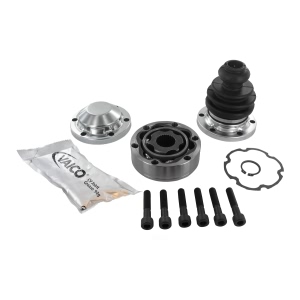
 $55.29Product Specifications
$55.29Product Specifications- Joint Type: CV Joint
- Length [mm]: 115
- Packaging height [cm]: 20
- Packaging width [cm]: 11,5
- Weight [kg]: 2,17
- Part Description: Front Passenger Side Inner CV Joint Kit
- $216.85 MSRP:
$309.72You Save: $92.87 (30%)Product Specifications- Other Names: Outer CV Joint, Outer Joint
- Item Dimensions: 8.8 x 8.1 x 5.2 inches
- Item Weight: 7.80 Pounds
- Fitment Type: Direct Replacement
- Replaces: 44014-STX-A50
- Part Description: Joint Set, Outboard (NTN)

 $157.31Product Specifications
$157.31Product Specifications- Additional Contents: Boot Clamp, Snap Ring
- Bolt Circle Diameter: 4.038"
- Bolt Diameter: 0.421"
- Bolt Hole Quantity: 6
- Color/Finish: Natural
- Grease Included: Yes
- Housing Outside Diameter (in): 4.65"
- Housing Thickness (in): 1.301"
- Installation Hardware Included: No
- Item Grade: Standard Replacement
- Material: Steel
- OE Part Number: 52105990AB
- Spline Count: 30
- Spline Diameter (In): 1.153"
- Spline Length (In): 1.385"
- UPC: 019495343226
- Part Description: OE Solutions Front Propeller Shaft Cv Joint Kit
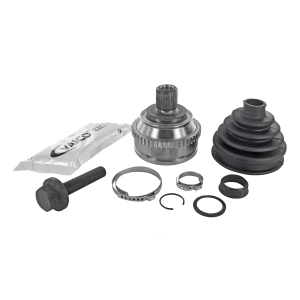
 $57.93Product Specifications
$57.93Product Specifications- Braking / Drive Dynamics: for vehicles with ABS
- Length [mm]: 115
- Packaging height [cm]: 20
- Packaging width [cm]: 11,5
- Weight [kg]: 2,73
- Part Description: Front Passenger Side Outer CV Joint Kit
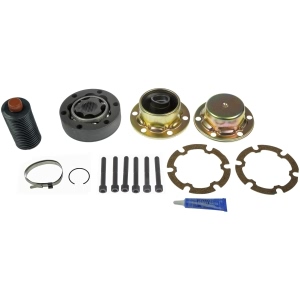
 $162.84Product Specifications
$162.84Product Specifications- Additional Contents: Gasket Maker, Boot Clamp, Snap Ring
- Bolt Circle Diameter: 3.857"
- Bolt Diameter: 0.416"
- Bolt Hole Quantity: 6
- Bolt Thread Sizes: M10 X 1.5
- Color/Finish: Natural
- Grease Included: Yes
- Housing Outside Diameter (in): 4.487"
- Housing Thickness (in): 1.326"
- Installation Hardware Included: Yes
- Item Grade: Standard Replacement
- Material: Steel
- Spline Count: 28
- Spline Diameter (In): 1.068"
- Spline Length (In): 1.469"
- UPC: 019495343219
- Part Description: OE Solutions Front Propeller Shaft Cv Joint Kit With Plunged End
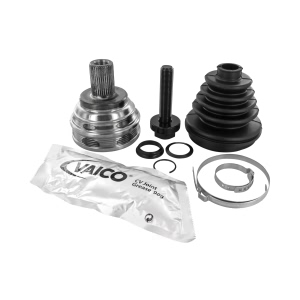

VAICO® Front Outer CV Joint Kit
PartNumber: V10-7416$59.52Product Specifications- Internal Teeth, wheel side: 30
- Length [mm]: 95,5
- Outer diameter [mm]: 90
- Outer gearing wheel side: 36
- Packaging height [cm]: 20
- Packaging width [cm]: 11,5
- Seal Diameter [mm]: 59,5
- Thread Size: M16x1,5
- Weight [kg]: 2,262
- Part Description: Front Outer CV Joint Kit
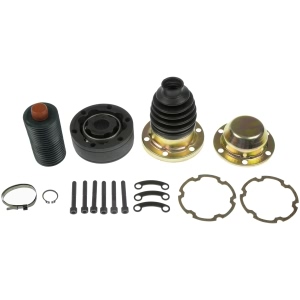
 $152.48Product Specifications
$152.48Product Specifications- Additional Contents: Boot Clamp, Snap Ring
- Bolt Circle Diameter: 3.379"
- Bolt Diameter: 0.346"
- Bolt Hole Quantity: 6
- Bolt Thread Sizes: M8 X 1.25
- Color/Finish: Natural
- Grease Included: Yes
- Housing Outside Diameter (in): 3.925"
- Housing Thickness (in): 1.485"
- Installation Hardware Included: Yes
- Item Grade: Standard Replacement
- Material: Steel
- Spline Count: 30
- Spline Diameter (In): 0.918"
- Spline Length (In): 1.485"
- UPC: 019495343158
- Part Description: OE Solutions Propeller Shaft Cv Joint Kit
- $58.72 MSRP:
$85.31You Save: $26.59 (32%)Product Specifications- Item Dimensions: 3.7 x 1.4 x 3.6 inches
- Item Weight: 1.40 Pounds
- Fitment Type: Direct Replacement
- Replaced by: 04371-04031
- Part Description: Spider Kit, Universal Joint
About Cv Joint
The CV joint is a vital part of the vehicle since the driveshaft depends on the CV joint to transfer power. It transfers the power through a variable angle at a steady speed with little to no friction at all. The most common type of CV joint is the Rzeppa, tripod, and double offset.
Rzeppa jointsThe Rzeppa joint has round-like inner shells with grooves that are like the outer shell. The cage typically has six openings around the edge. The joint can help with the drastic change in angles when the wheels are turned by the steering wheel. Rzeppa joints usually allow a certain degree of movement ranging from 45-48 degrees.
Tripod jointsThe tripod joints are used at the end of the driveshafts and have a three-pointed yoke that is linked to the shaft. It fits into a cup with the matching grooves that are connected with the differential. The tripod joint does not have the same mobility as other joints, but it is lower in cost and efficiency.
Common issues with a faulty CV jointA faulty CV joint can lead to a knocking sound from the joint and possible loss of vehicle control.



